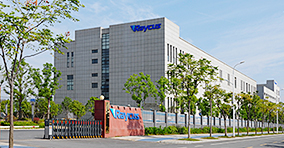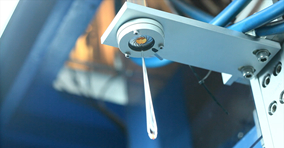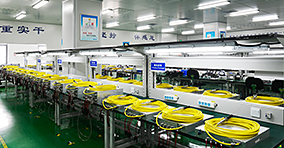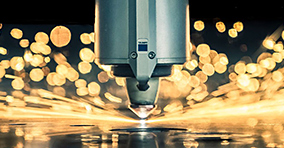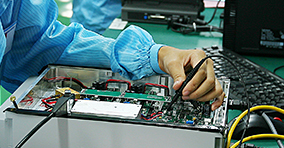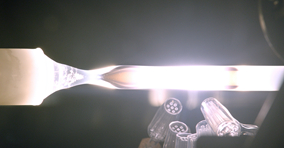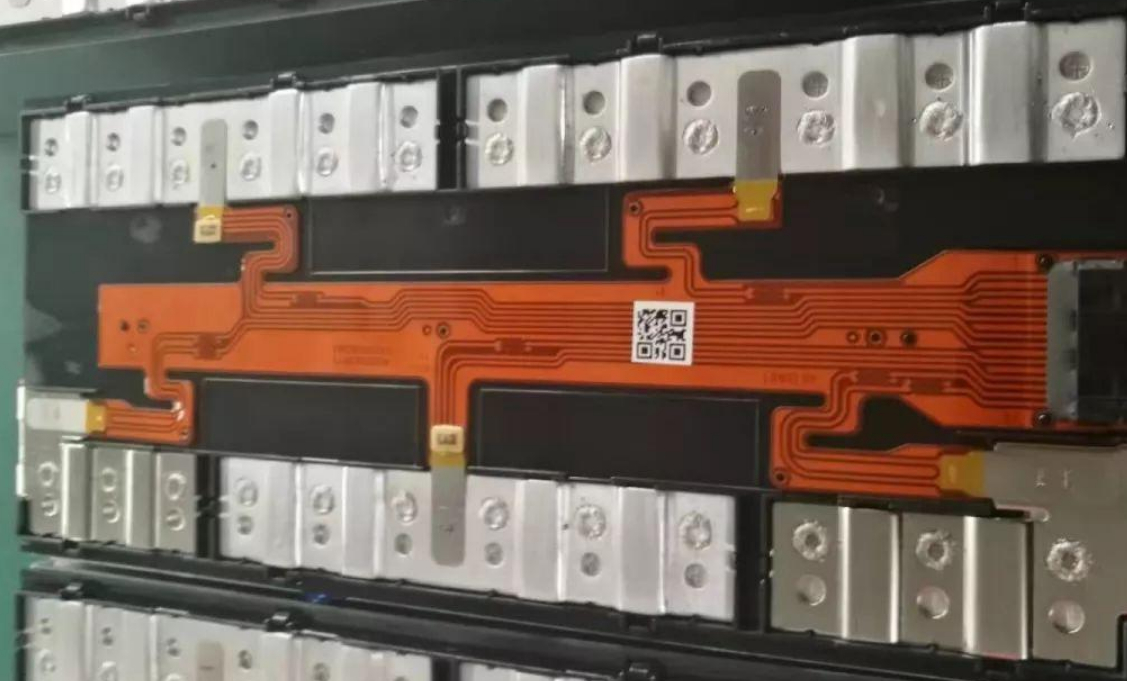As an efficient and precise connection method, laser welding has obvious advantages: high processing efficiency, high processing accuracy, small heat affected zone, small welding deformation, high degree of automation, and so on. Applying laser welding to the welding of automotive power batteries can greatly improve its safety, reliability and service life.
There are many laser welding parts for power batteries. The materials are mainly aluminum alloys , a small number of parts are made of copper , nickel and other materials, and a small number of stainless steel are used as battery cases. Among these materials, the laser welding process of nickel and stainless steel is relatively simple It is also more mature, but there are still many difficulties in laser welding of aluminum alloys and copper. In addition to the effects of material properties, the state of the welded joint will also have a greater impact on the welding effect.
Types and status of materials to be welded
Type of material to be welded
When aluminum alloy and copper are used as materials to be welded, the main reasons for the poor laser welding effect of conventional methods are:
① Both are high-reflection materials for fiber lasers, and the absorption rate of fiber lasers is not high, resulting in poor stability of the welding process;
② The thermal conductivity of both is better, the formation of welds is difficult, and pores are easy to occur.
At the same time, there are some differences between the two materials. Relatively speaking, the aluminum alloy has a higher absorption rate of fiber lasers than copper, and copper has better thermal conductivity than aluminum, so there are solutions to the difficulties of laser welding between the two In the same place, there are certain differences:
Aluminum alloy
1 Welding with a relatively small focusing spot (0.1mm ~ 0.3mm);
2 The welding speed should not be too low, and it should be controlled above 60mm / s;
3 using fiber-semiconductor laser hybrid welding;
4 using swing welding.
Copper
1 Welding using a smaller focusing spot (0.02mm ~ 0.2mm);
2 The welding speed should be fast, it is recommended to be above 100mm / s;
3 using swing welding.
Material status to be welded
The state of the material to be welded described in this article refers to the surface cleanliness and pretreatment of the material. These conditions will cause the quality of the weld to deteriorate. Specific results and solutions:
Impurities on the material surface
Difficult performance:
There are pores in the weld, the sealing is not enough, and the strength is not enough;
The weld has a burst point and the product is scrapped.
solution:
Before welding, the impurities such as oil and water stains need to be removed.
Uncleaned oxide on aluminum alloy surface
Difficult performance:
There are more air holes in the weld, insufficient sealing and insufficient strength;
The molding is unstable and the yield is reduced.
solution:
Before the welding material is welded, perform deoxidizing film treatment, and then perform welding as soon as possible.
Rough machining of material to be welded
Difficult performance:
Uneven molding, poor appearance;
Prone to welding leakage, no sealing.
solution:
The material is machined and needs to be flat and without deformation.
Types and requirements of the parts to which the weld belongs
At present, there are three main types of automotive power batteries: square batteries , cylindrical batteries, and soft-pack batteries . The most commonly used are square batteries, and it is also the type of battery that uses the most laser welding parts. The other two types of battery market share and laser welding requirements Both are much less. The main problems of the weld are insufficient strength, insufficient sealing and poor molding, which lead to these problems. The common feature is that the welding process is incorrectly selected. In addition, there are welding difficulties caused by the structure of the parts to be welded and the requirements of the weld. , Specific conditions and solutions:
Pouch battery parts
Ear / bus
Difficulties in welding:
The material is thin, and the multi-layer overlapping welding is prone to false welding, resulting in insufficient strength and poor conductivity.
solution:
Control incoming flatness;
Design excellent fixtures to control the clamping gap.
Difficulties in welding:
Insufficient weld joint width results in insufficient strength.
solution:
A small core fiber laser is selected, and wobble welding is used.
Cylindrical battery parts
21700 battery cap
Difficulties in welding:
The material is thin, easy to burn through, and the strength cannot reach.
solution:
Control incoming consistency
Designing fixtures with excellent performance to control the clamping gap;
Select a small core fiber laser, and use a galvanometer to weld at high speed (above 300mm / s).
Module
Difficulties in welding:
Welding depth requirements are large, and weld formation is poor.
solution:
The laser core is selected from 50 μm to 100 μm, and high-speed (more than 80 mm / s) welding is performed using a higher power.
Square battery parts
Liquid injection hole, flip, pole, explosion-proof valve
Injection hole
Flip
Pole
Explosion-proof valve
Difficulties in welding:
There are many pores, which is prone to burst points, resulting in insufficient sealing.
solution:
Improve the cleanliness of the parts to be welded;
The fiber laser with 50μm core is selected, and the welding speed can be appropriately increased.
Shell seal
Difficulties in welding:
There are many pores, which is prone to burst points, resulting in insufficient sealing.
solution:
Improve the cleanliness of the parts to be welded;
Using 50μm fiber laser, the welding speed can be increased appropriately;
Small-core fiber laser + semiconductor laser is selected for composite welding.
Difficulties in welding:
Square welds are easy to burn through at the four corners, resulting in insufficient sealing.
solution:
Choose a welding platform with better acceleration performance;
High welding speed is used to reduce the laser irradiation time at the corners.
Difficulties in welding:
The welding seam is unevenly formed and the processing efficiency is not high enough.
solution:
Small-core fiber laser + semiconductor laser is selected for composite welding.
Bus
Difficulties in welding:
The material is thin, and the multi-layer overlapping welding is prone to false welding, resulting in insufficient strength and poor conductivity.
solution:
Control incoming flatness;
Design excellent fixtures to control the clamping gap.
Difficulties in welding:
Insufficient weld joint width results in insufficient strength.
solution:
A small core fiber laser is selected, and wobble welding is used.
Siding
Difficulties in welding:
There are many welding parts and high efficiency is required.
solution:
Select a high-power fiber laser for remote scanning welding.
Soft connection
Difficulties in welding:
The material is thin, and the multi-layer overlapping welding is prone to false welding, resulting in insufficient strength and poor conductivity.
solution:
Control incoming flatness;
Design excellent fixtures to control the clamping gap.
Difficulties in welding:
Insufficient weld joint width results in insufficient strength.
solution:
A small core fiber laser is selected, and wobble welding is used.
Laser recommendation
In order to be able to solve the problems encountered in power battery welding, for the lasers involved in the above solution, Ruike Laser has introduced several small fiber core fiber lasers suitable for power battery laser welding, and dual laser composite welding. The semiconductor lasers used and high-quality high-power fiber lasers can well cover the series of lasers required for power battery welding, as shown in the figure below.
500W ~ 1kW
Continuous fiber laser
Fiber core diameter
14μm ~ 50μm
2kW ~ 3kW
Continuous fiber laser
Fiber core diameter
25μm ~ 50μm
1kW ~ 2kW
Fiber Output Semiconductor Laser
Fiber core diameter
300μm ~ 600μm
4kW ~ 6kW
Continuous fiber laser
Fiber core diameter
100μm ~ 200μm
Agenda Preview
From December 16th to 18th, the “2019 Advanced Lithium Battery & Electric Vehicle Annual Conference” was grandly opened at the Hyatt Regency Shenzhen Airport. The theme of the annual conference was “Global Darkest Moment and Great Prospects”, an annual lithium battery industry The feast of thoughts staged a laser.
With the continuous development of laser technology and the development of new processes, it will provide better solutions for the field of lithium batteries. Ruike Laser will also share fiber laser products and solutions that help the intelligent manufacturing of power batteries at this lithium battery feast.
2019 Senior Engineering Lithium & Electric Vehicles Annual Meeting
Time:
December 17 (Tuesday) 9: 45-10: 00
speaker:
Tong Wei, Director of Ruike Laser New Energy Industry
topic of speech:
Domestic laser imports instead of acceleration
Roundtable dialogue:
In the round-table dialogue held at the same time from 11:30 to 12:00 on December 17th (Tuesday), Li Jie, deputy general manager of Ruike Laser, will discuss with many elites on the spot. Laser intelligent manufacturing upgrade will help power battery manufacturing reduce costs and improve efficiency And other related issues.


